Sony WM-EX615 (Cassette Player)
Introduction
From the year 2003, Sony released their WM-EX615 cassette player - an auto reverse-capable slim model, that came in either blue or green colourways. Given the last Walkman cassette player (the WM-FX290W) released in 2004, this model features a mature mechanism design, along with a steel cassette door for protection from electromagnetic interference.
Showcase
The device, being a slim model, is not much larger than a cassette itself. It has a premium-feeling coated metal housing with plastic for the button membrane, the opening mechanism and the battery cover. The main operational buttons are this rubbery material that does discolour with age and use, but are still reasonable to use 20+ years after manufacturing. The SONY and WALKMAN logos are embossed from the lid with a textured metal surface.
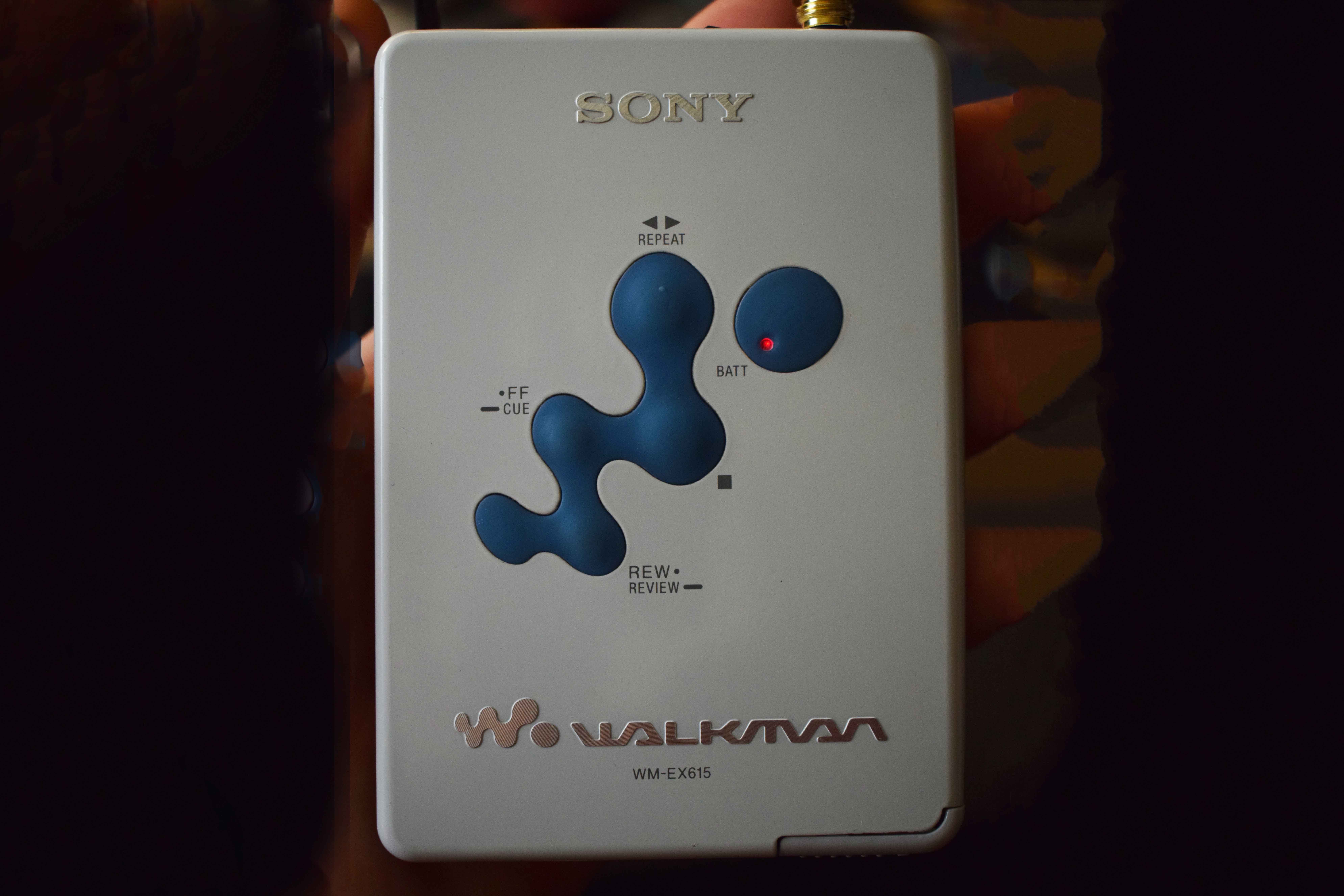
The metal surface can scratch fairly easily and the grey print on both sides has a tendency to wear out. Whilst this unit is in very good condition, it can bee seen at the bottom of the device.
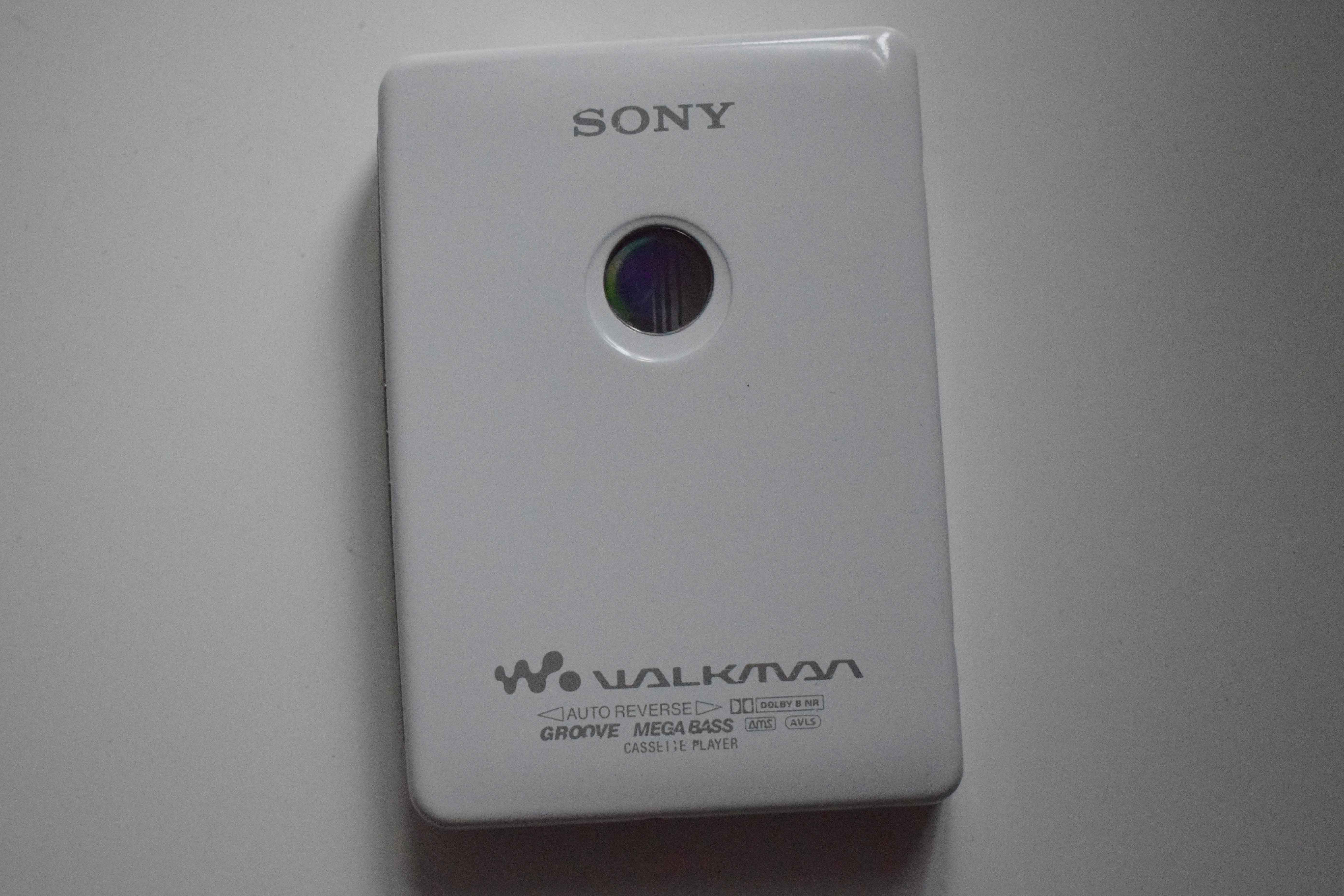
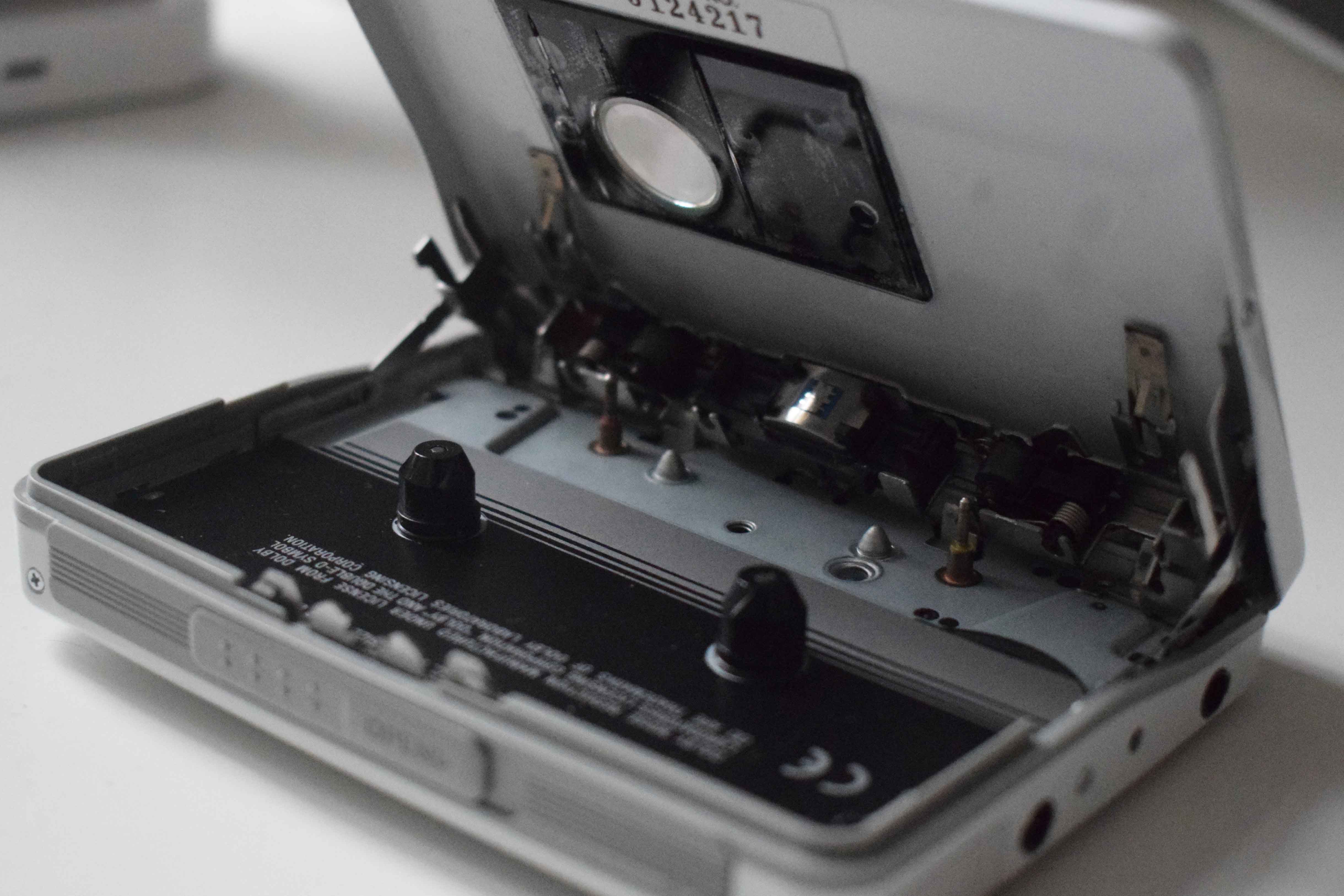
The top side presents the volume control, hold switch, and headphone/remote combo port. Whereas, the opposite side has connectors for the external battery case, as well as a latch to open the internal battery holder. Of which, fits a NC-6WM rechargeable battery. These "gumstick" batteries require a non-standard charger, given its shape - acquiring these is obviously more difficult nowadays, so the one that is typically recommended is the Doublepow USB DP-UK201.
Disassembly
Removing the front cover is a fairly simple process - just a few screws, then manoeuvre the metal cover around the internals. This reveals the PCB, battery, and part of the cassette mechanism. On the underside of the cover piece, the button membrane is shown, which perfectly interface with the SMD push buttons on the PCB.
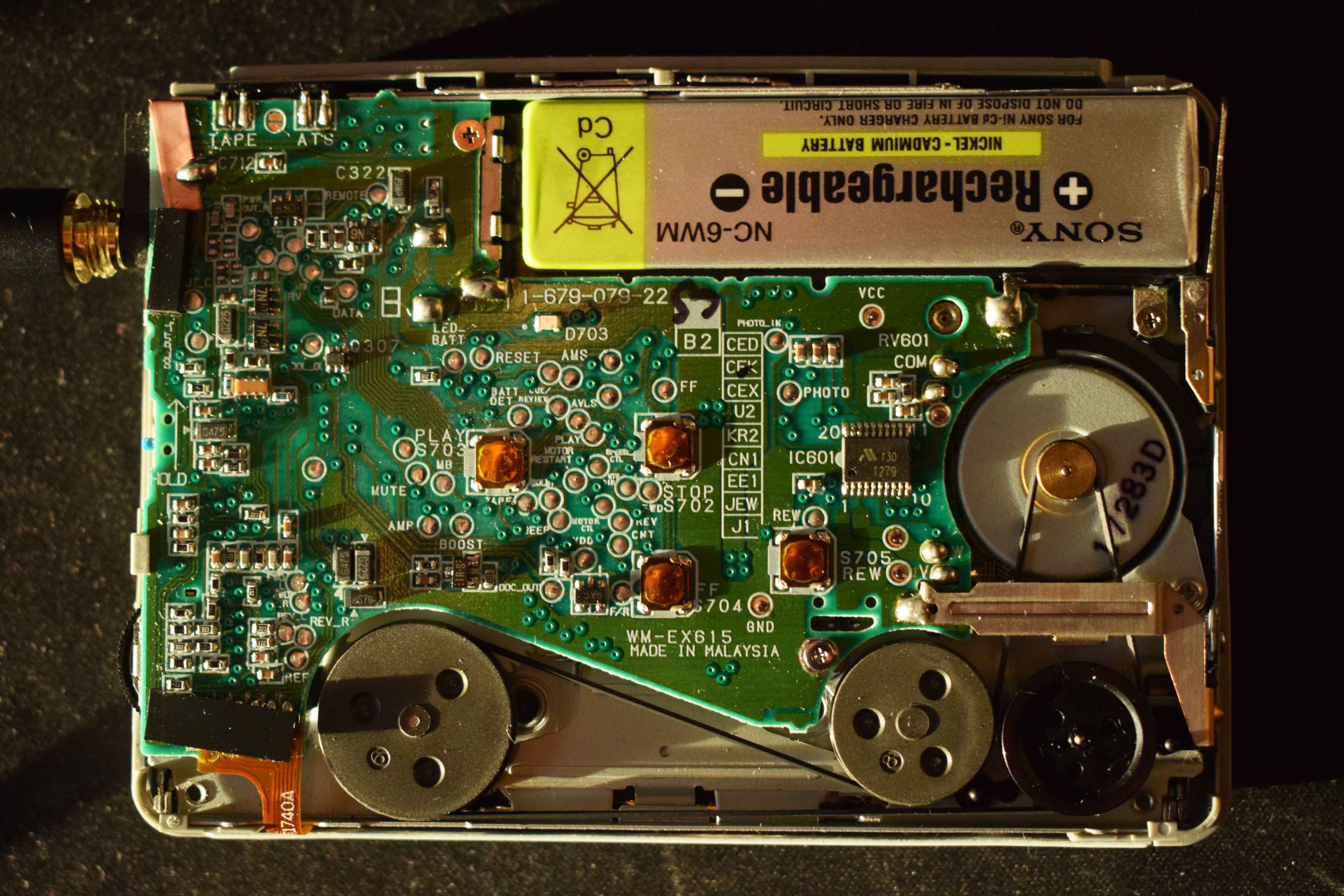
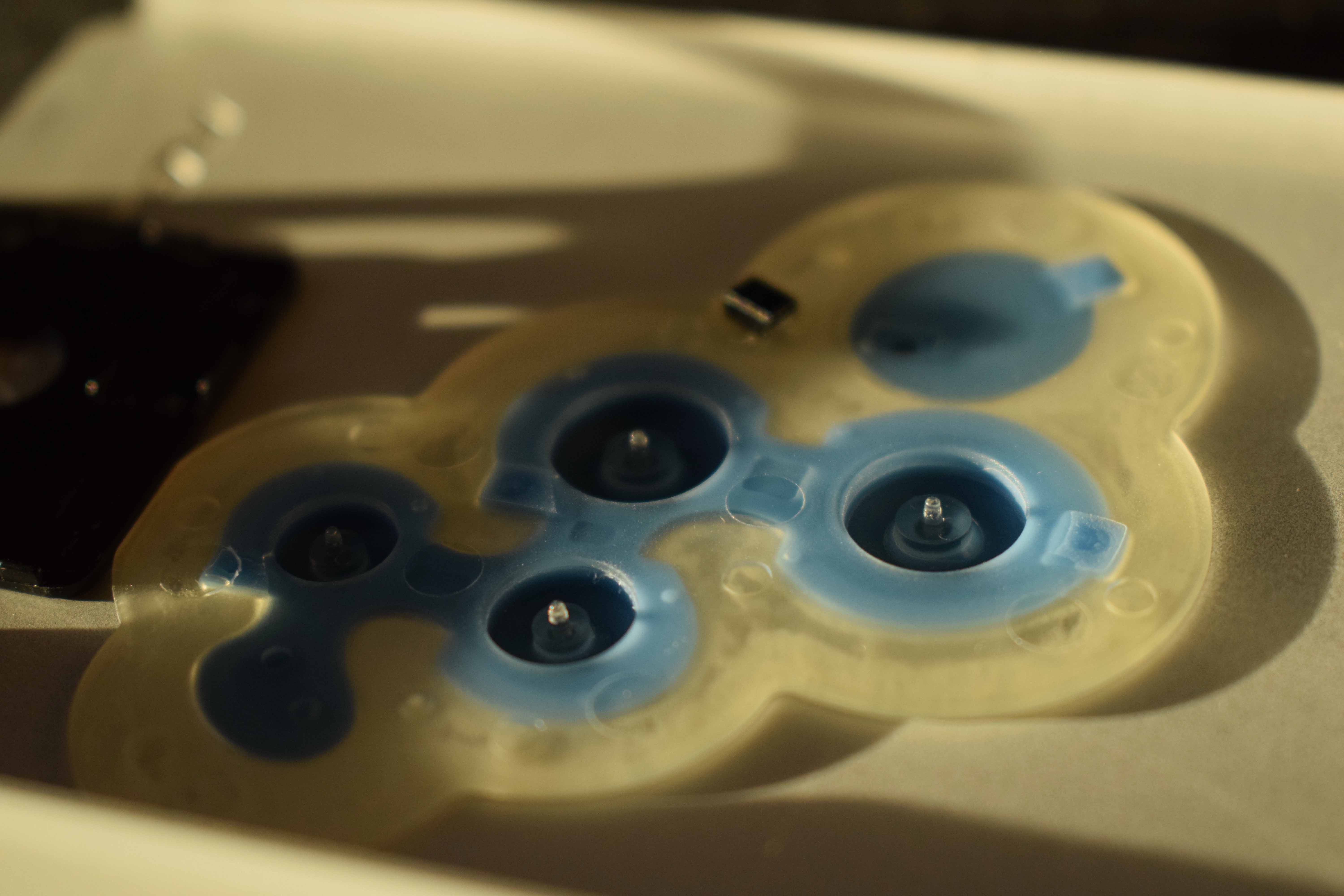
When in operation, a red battery indicator LED is illuminated through one of the blue dots (this, and the smallest blob at the opposite end, are not actually buttons). Along with this, the pulley and flywheels spin up, allowing for some cool photography.
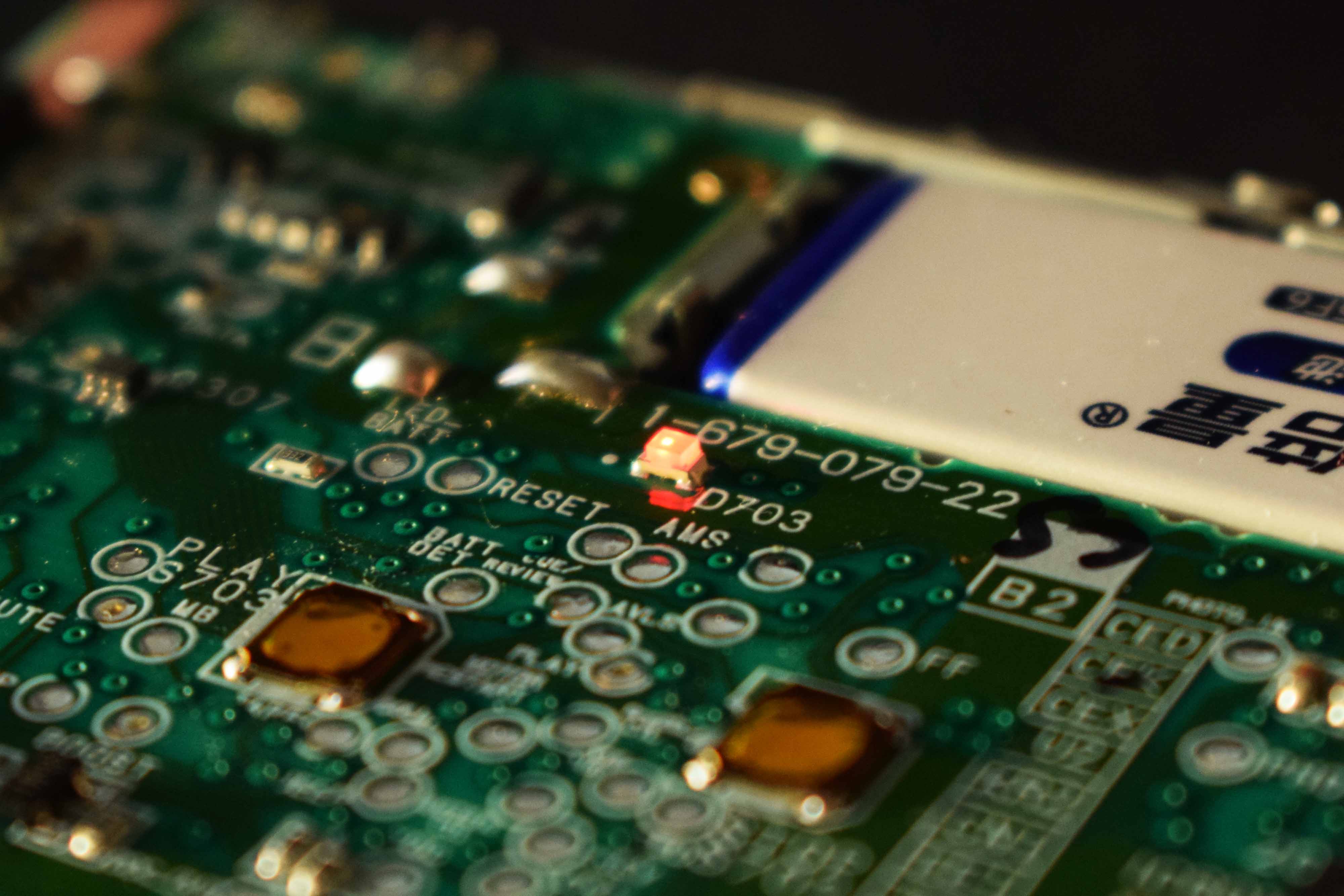
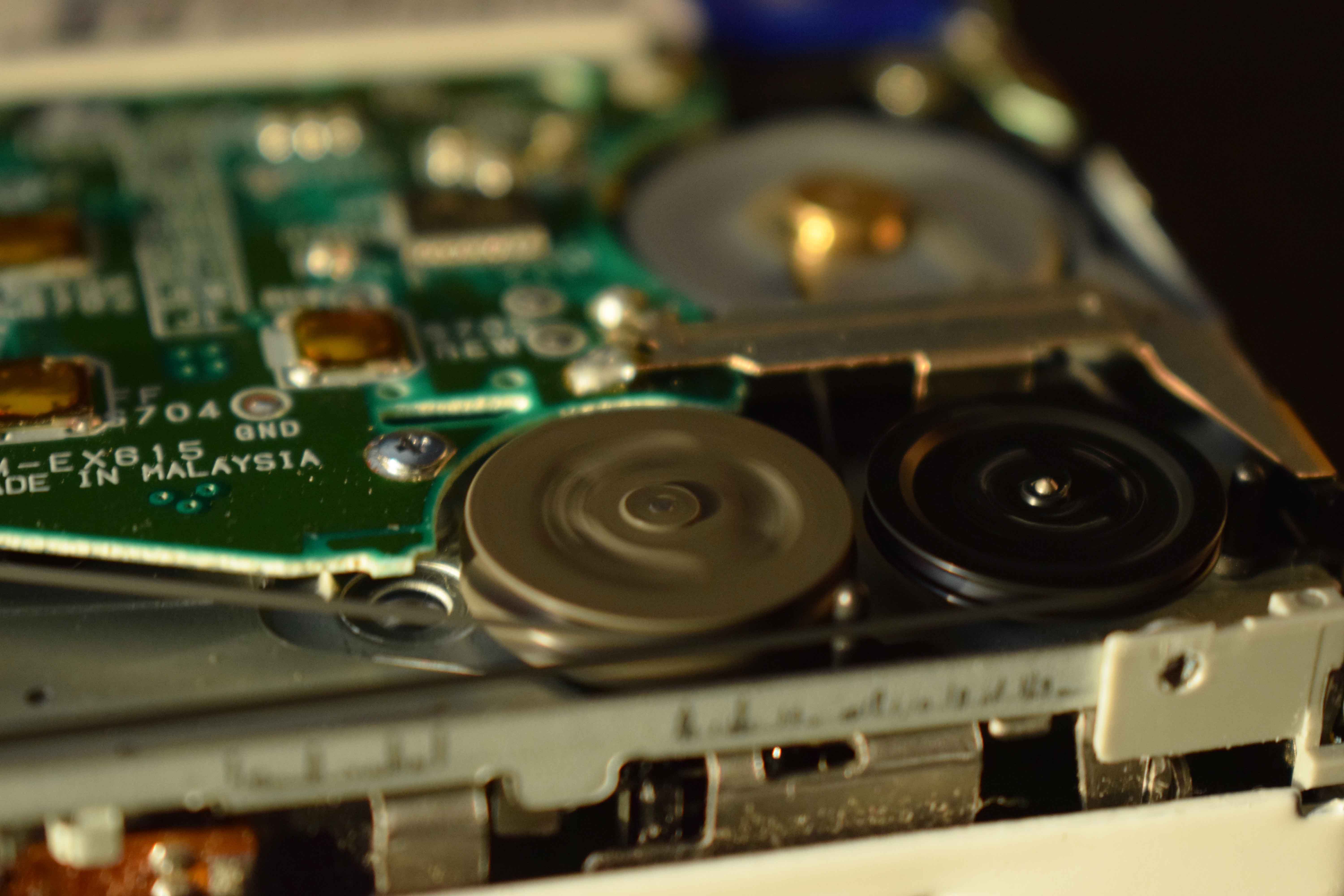
Going deeper, if the PCB is de-soldered, the rest of the mechanism is revealed. The notable features are the motor spinning the whole assembly via the drive belt, and "cam gear" - the rightmost middle black gear (hidden under the white gear and white plastic arm). This contributes to the classic cassette noises as it changes the arm changes its position for different modes. Depending on this position, different parameters change - such as whether the cassette door is locked or not - as well as the current mode of operation.
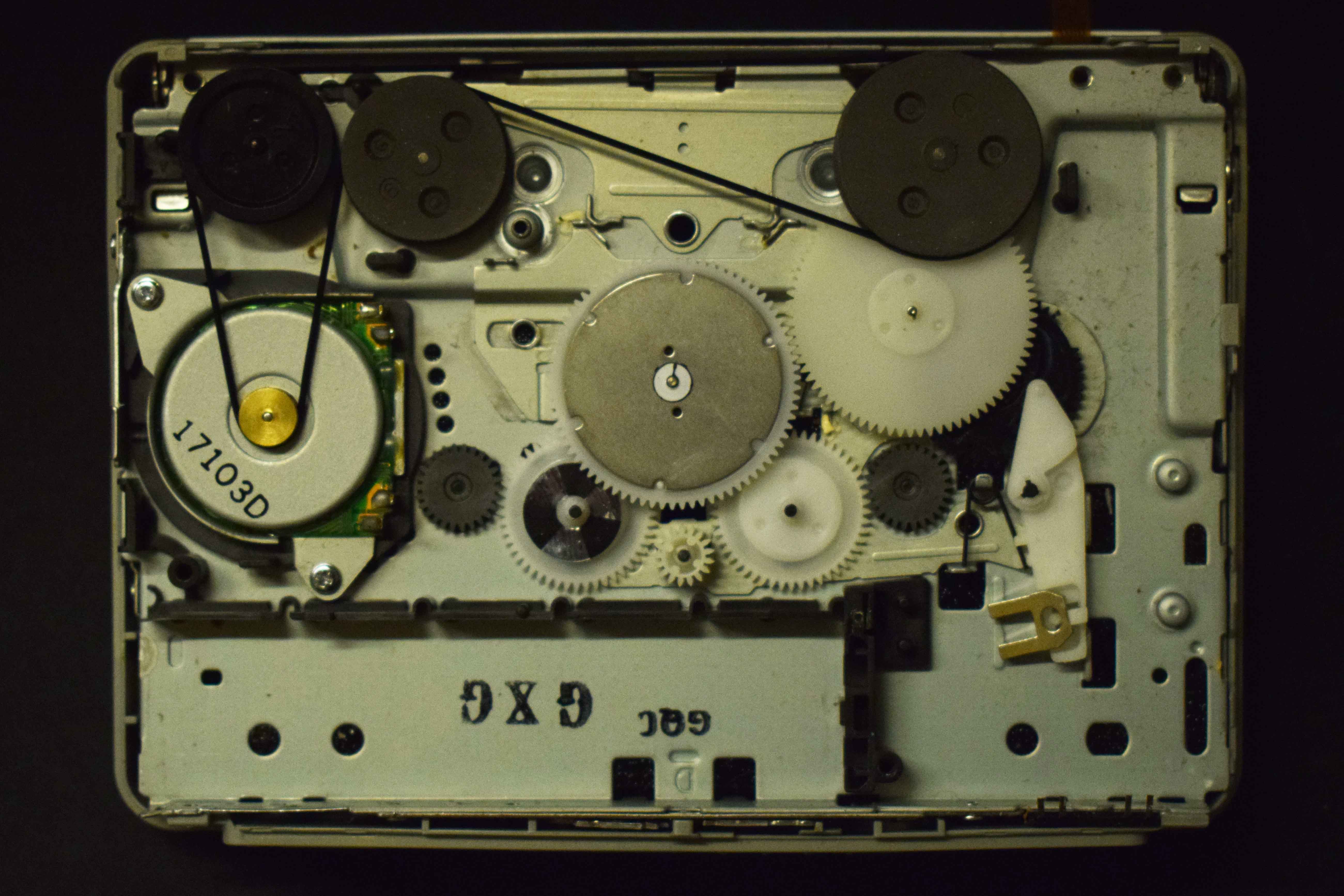
Along with this, there is a metal "n" shape hook at the end of the trigger arm. On the underside of the PCB, this links electromagnetically to the "plunger" solenoid (two copper coils) found on the main PCB. Depending on the current mode, the solenoid can be controlled by the board to adjust the cam gear, changing the operation of the other gears - allowing for play, stop, fast forward, rewind, etc. Diagrams for all of this can be found in the service manual.

Remote
Along with other accessories, a separate remote control was sold with the device. This utilises the proprietary port (that differs depending on model, as they seemingly changed the pin-out) on the top. This then interfaces with the headphones via a standard 3.5mm TRS connector.
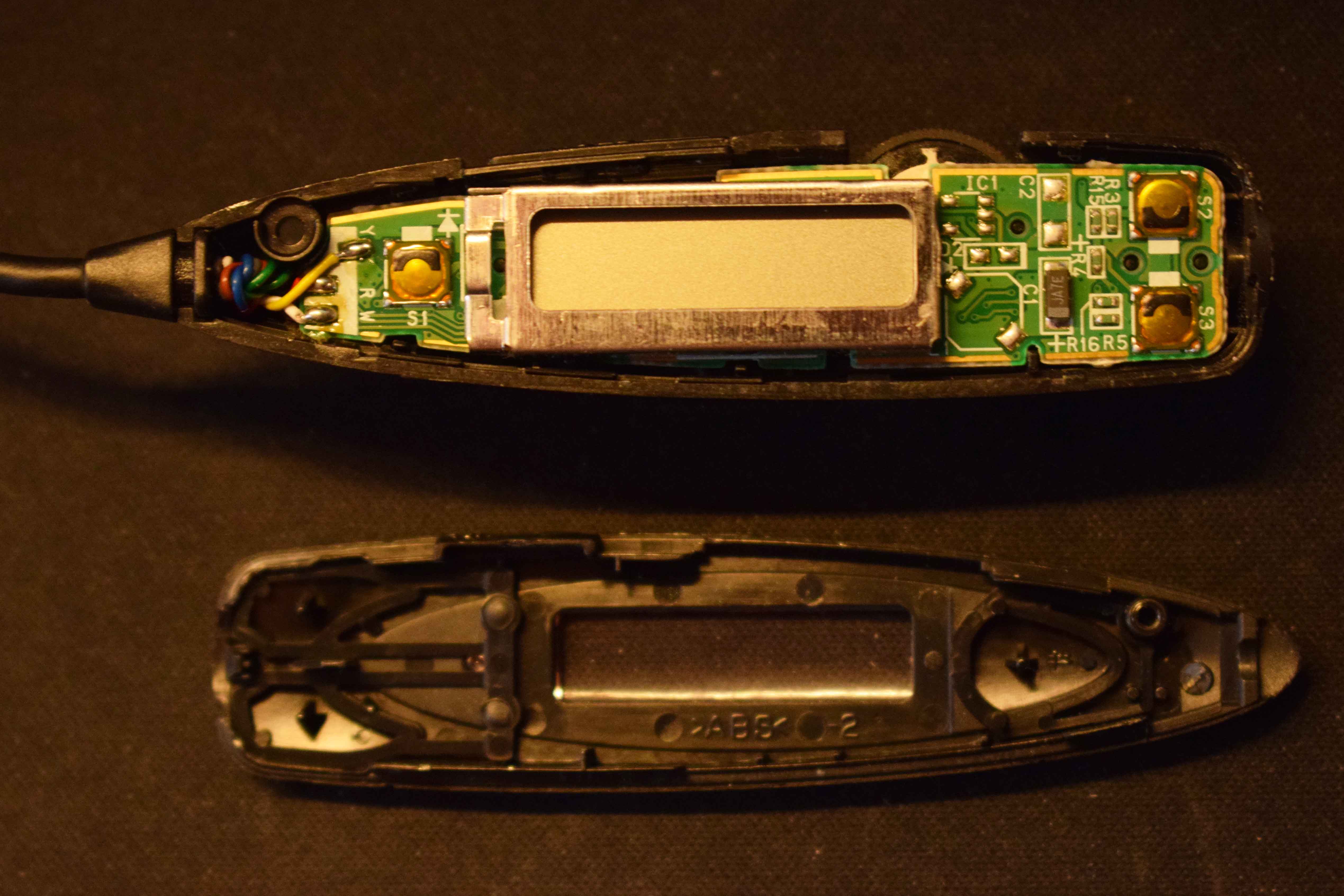
So, why use a remote? It provides a LCD screen and mirrors most of the same buttons that are on the actual device - play/stop, fast forward, rewind, a hold switch and a volume dial. The difference is that it has a MODE and SOUND button, which is the only place you can change the settings for the cassette auto reverse, Dolby B NR (Noise Reduction), AVLS (Automatic Volume Limiter System) and equaliser settings. The latter of which has the options for "RV (Sound Revitaliser)", a treble boost; "MB (Mega Bass)", a bass boost with moderate effect; and "GRV (Groove)", a bass boost with strong effect; and none. I think I know which mode I will stick with...
So it has a small amount of electronics, including some sound processing features, a clip so it can be attached to clothing, and means the device can be operated remotely. Personally, I prefer to use it without the remote as it feels quite cheap and plastic-y, which I'm rather disappointed about. It's probably too much effort for me to redesign the housing and make it nicer to use...
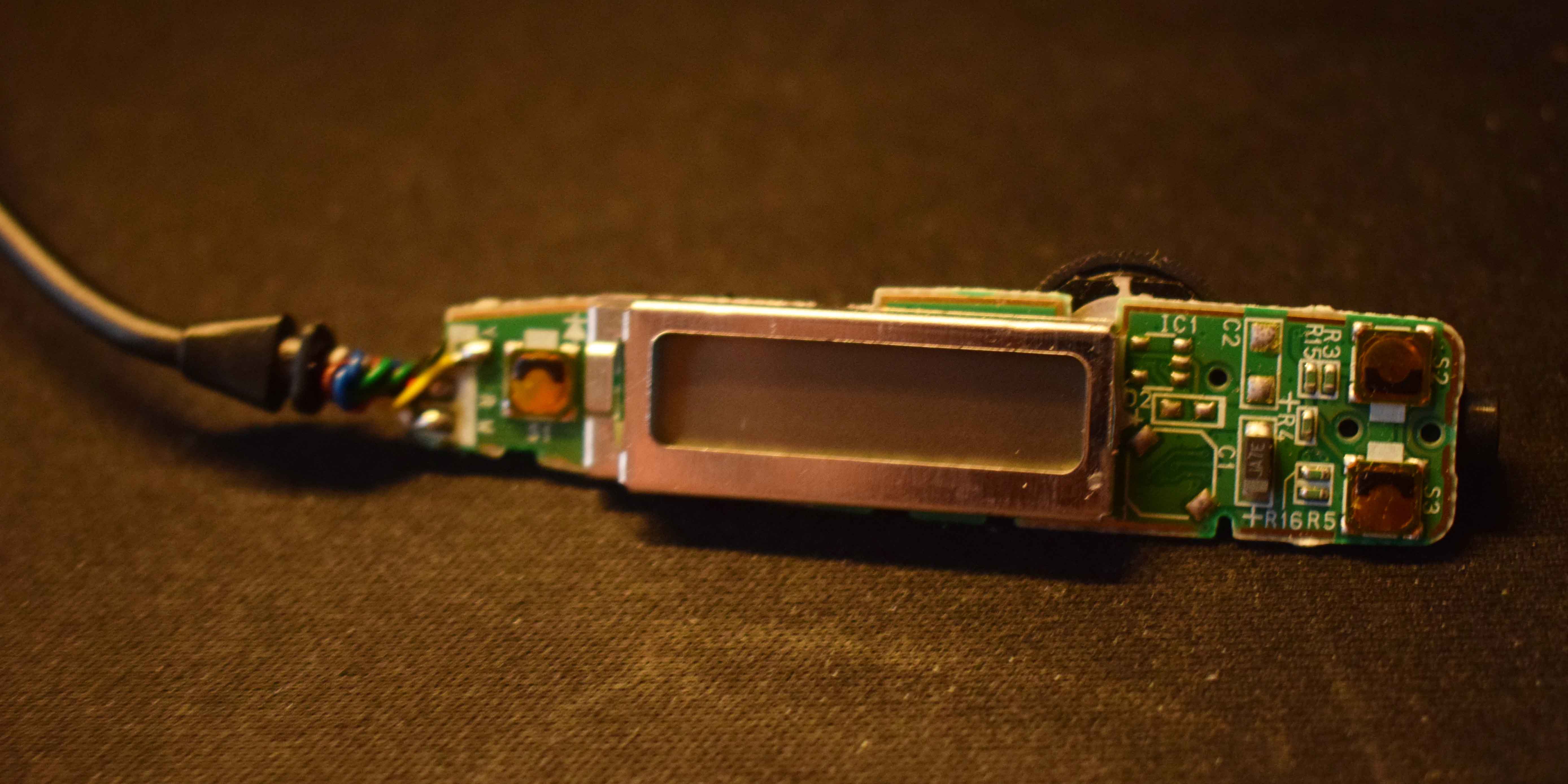
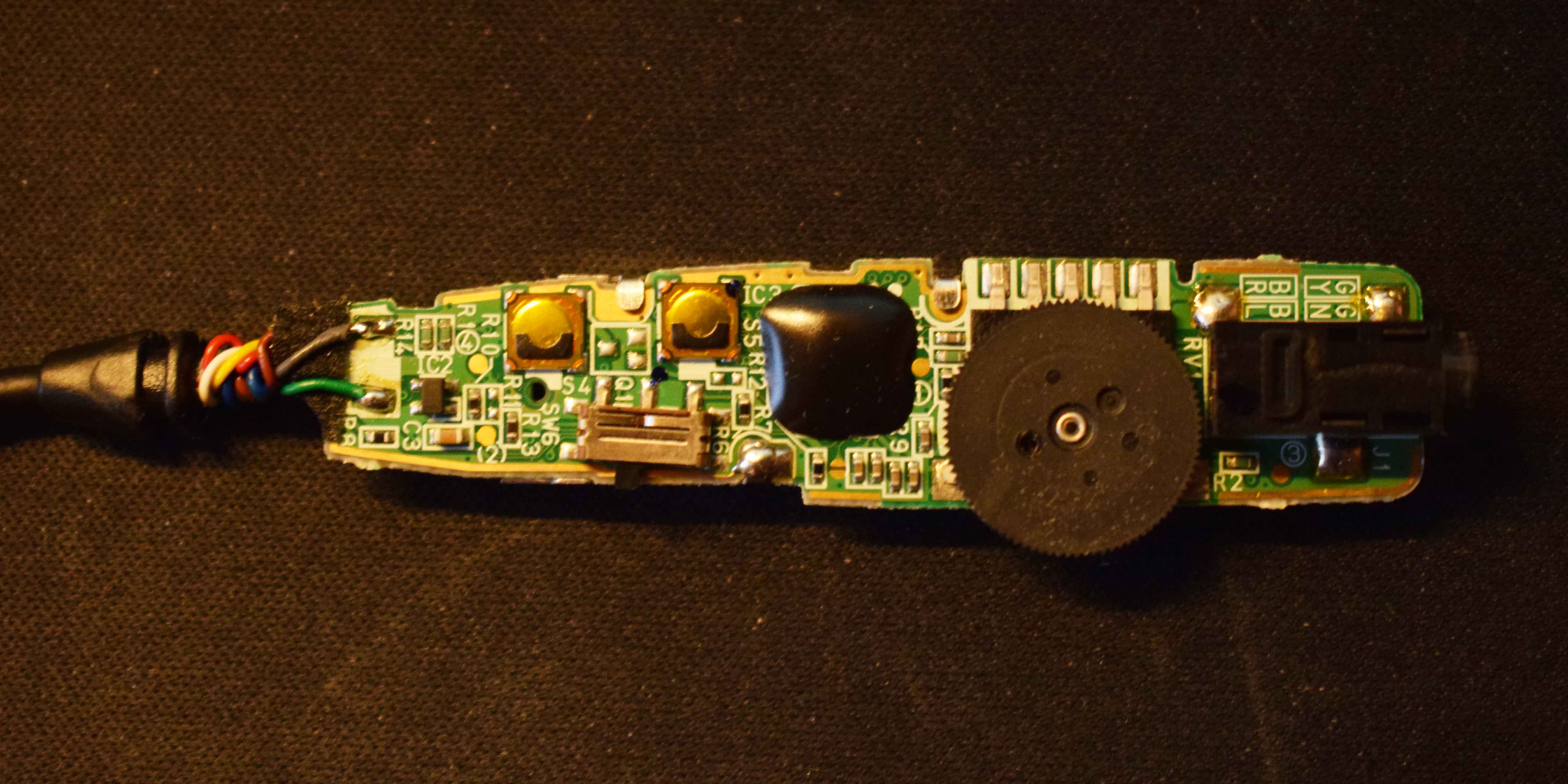
External Battery Case
This plastic enclosure, that tends to goes for £20-£50 on eBay, has the ability to store a single AA battery for a 44 hour extended playback time*.
*When using a Sony LR6(SG) "STAMINA" alkaline dry battery (produced in Japan).
The rechargeable NC-6WM battery is only rated for a total of 16 hours of playback, so it is quite an uplift, although that is only for Sony specific non-rechargeable batteries. I haven't tested these claims myself with other batteries but it can run from a 1.2V cell so rechargeable cells can be used. I'm sure, with some good quality, high capacity rechargeable batteries, it can run for quite a while.
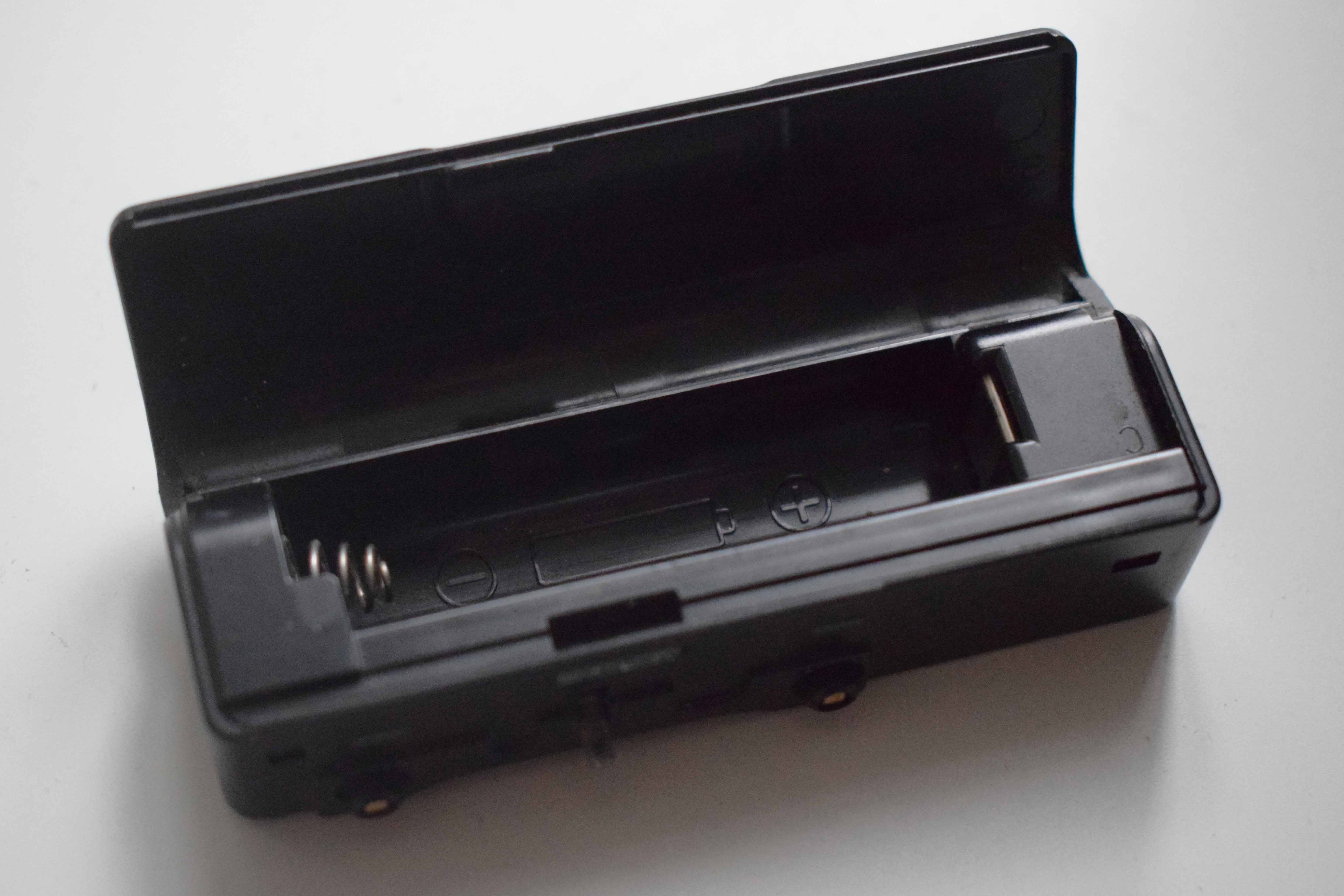

Closing Thoughts
The EX615 is a cool device, and being near the end of Sony's cassette era, it has a very matured design. It's easy to operate, maintain, and is very portable (as far as cassettes are concerned). It was interesting to see how it works, and whilst cassette is definitely not the best medium for accurate, noiseless audio listening, it certainly has its quirks, and is fun to use (when it doesn't have issues). This was a great birthday present, thanks Myah.